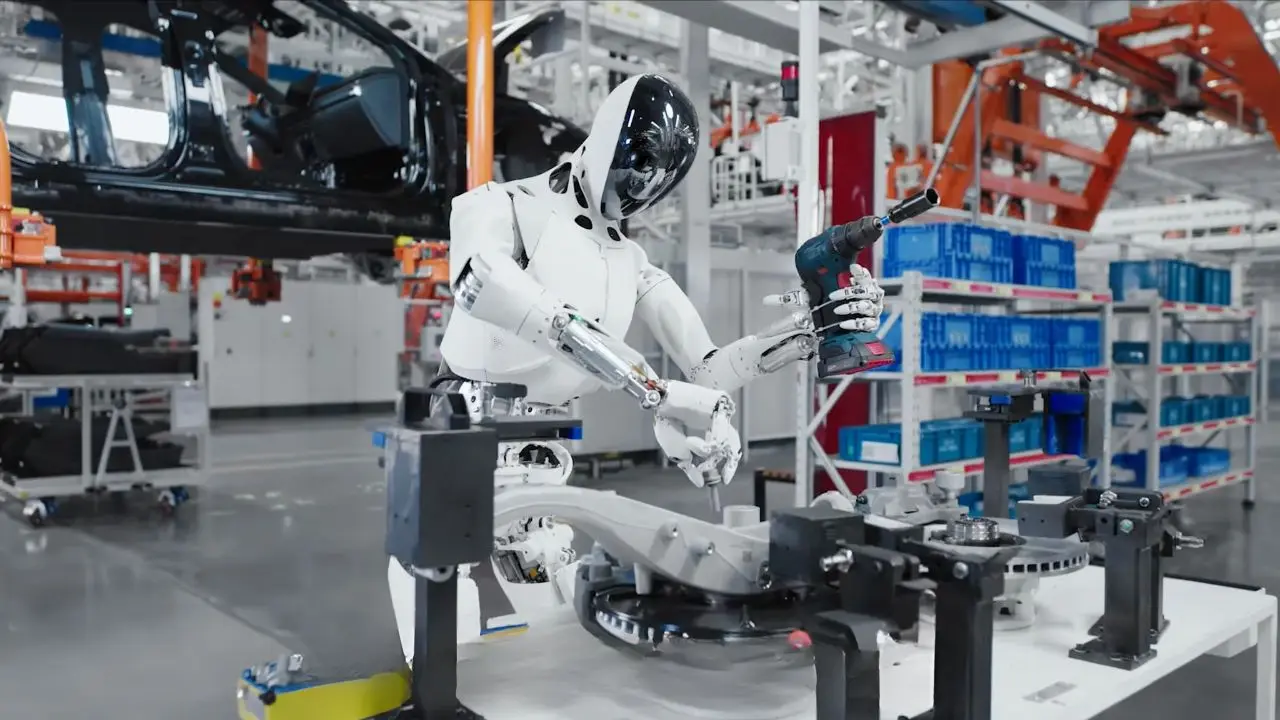Chinese humanoid robot with eagle-eye vision and powerful AI

XPENG’s humanoid robot, Iron, is not your typical factory machine. Standing 5 feet, 8 inches tall and weighing 154 pounds, Iron combines advanced artificial intelligence with human-like movement and exceptional vision. Already hard at work assembling electric vehicles in XPENG’s factories, this robot is designed to change how we think about robots in everyday life.
Iron’s design includes 60 joints and 200 degrees of freedom, allowing it to move smoothly and naturally. Unlike traditional robots that often move with jerky or stiff motions, Iron walks steadily and can manipulate objects with precision thanks to its human-like hands. XPENG has developed its mobility system using reinforcement learning and large artificial intelligence models, enabling Iron to adapt to a variety of complex tasks. While it currently helps build cars, XPENG envisions Iron performing administrative work, customer service and even household chores in the future.
At the heart of Iron is XPENG’s proprietary Turing AI chip, a powerful processor capable of handling 3,000 trillion operations per second. This chip processes AI models with 30 billion parameters, allowing Iron to think, adapt and respond with human-like intelligence. Iron’s vision system, inspired by XPENG’s self-driving car technology, offers a remarkable 720-degree field of view, giving the robot eagle-like awareness of its surroundings. Its speech interaction system is also adapted from XPENG’s intelligent vehicle cockpits, enabling natural and logical conversations.
XPENG is not limiting Iron to factory work. The company sees Iron as a personal assistant that can support people in offices, retail environments and homes. Although the current version is priced around $150,000 and targeted mainly at businesses, XPENG plans to develop more accessible versions for everyday consumers. Iron’s advanced dexterity, powered by custom-designed robotic hands with 15 degrees of freedom each, allows it to handle delicate tasks that require fine motor skills.
Iron is a key piece of XPENG’s broader AI Tech Tree strategy, which aims to create an ecosystem of smart electric vehicles, humanoid robots and even flying vehicles. This vision is also reflected in the company’s new 2025 XPENG X9 electric SUV, which features hundreds of technical upgrades, including ultra-fast charging and AI-powered driving systems that mimic human decision-making. Together, these innovations showcase XPENG’s ambition to blend robotics and automotive technology into a seamless future.
By leveraging AI technology originally developed for its electric vehicles, XPENG is creating a robot that bridges the gap between automotive innovation and humanoid robotics. With a significant investment and a clear roadmap, Iron has the potential to become much more than a factory assistant. It could soon become a helpful presence in offices and homes, changing how we interact with machines in everyday life.
Iron’s creators promise a future of seamless human-robot collaboration. But as it masters everything from car assembly to household chores, are we sleepwalking into a world where humans become obsolete, or is this the key to unlocking our greatest potential? Let us know by writing us at Cyberguy.com/Contact.
For more of tech tips and security alerts, subscribe to the free CyberGuy Report Newsletter by heading to Cyberguy.com/Newsletter. Ask Kurt a question or let us know what stories you’d like us to cover. Follow Kurt on his social channels.




